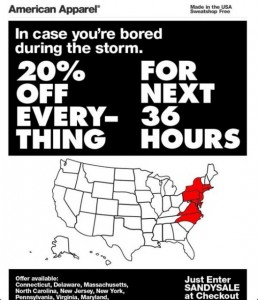“Every business must serve a social purpose”. These are not the words of a social campaigner or a politician; they are the words of a banker, Ashok Vaswani, the CEO of Retail and Business Banking at Barclays, one of the world’s largest banks. Barclays has been involved in at least one major trading scandal and holds the dubious honour of the most fined bank in Britain. There will be some people who will treat his words with understandable cynicism but that would be to miss the point.
The point is not whether the words are sincere or not – it is that they should have been said at all. Banks are concerned with the control of money, why should they concern themselves with any purpose beyond that? The reason is that society is demanding they do. When banks first started they fulfilled a social need in the community, to enable ordinary people to fund their ambitions. Over the years banks forgot that purpose and focused most of their efforts on funding their own ambitions through obscene profits, often at the consumer’s expense. The bubble burst in spectacular fashion with the downfall of Lehman Brothers in the US and RBS in the UK.
It isn’t just the banks that have lost their way. Now it’s critical for any business to demonstrate it has a purpose before, and beyond profit; that it seeks to improve the lives of its customers as a primary goal. Failure to have such a purpose, to be clear about it and to ensure it directs everything you do, will lose customers, employees and ultimately business value.
You only need to think about the recent VW scandal where, in an effort to boost market share and revenues, VW Group installed software into 11m million vehicles that artificially minimised emissions. The group have made provision for €6.5b in reparations but the final cost is likely to be far in excess of this. But this is only the latest in a series of organisational ‘own goals’.
One of the big news stories of 2012 was Hurricane Sandy. This ‘storm of the century’ caused 157 deaths and left 8 million people on the eastern seaboard of the USA without power for several days.

It was interesting to see how brands responded to this event. Some, like fashion retailers The Gap, Urban Outfitters and American Apparel, saw this as a sales opportunity and quickly launched campaigns like this one:
American Apparel targeted customers in the nine stricken states who were ‘bored’ at home and invited them to visit American Apparel for a 20% off deal.
Not unsurprisingly, consumers reacted with anger at this commercialisation of, what was, a terrible event for many people, and twitter and other social media channels were buzzing with outraged customers voicing their opinions about the apparent lack of sensitivity.
However, some other organisations chose to respond differently. For example, two brands, Duracell and Tide, found ways to help consumers in their hours of need and in so doing, created good-will for the brand.

Tide loaded a truck with 32 washer/dryers and sent it out on the streets so that people could wash their clothes. Now, a cynic might argue that this was just another form of marketing. That might be true in terms of the long-term effect but we don’t believe that was their objective. The evidence suggests that the first response of these two brands was to ask what they could do to help, rather than what they could do to sell. Why was this?
Perhaps because both brands are owned by P&G whose purpose is ‘to touch and improve more consumers’ lives with more P&G brands and products every day’. As a result, consumers experienced these brands in a totally different way to American Apparel.
So what explains the difference in the way these brands approached the crisis? We believe that we are seeing a trend that has been around for a while but has recently gained momentum and relevance for organisations wishing to differentiate through the customer experience.
A different breed of organisation is emerging in this world. They succeed because they have the courage, confidence or just sheer chutzpah to pursue a purpose that is beyond profit. They see their customers and employees as members of a like-minded community. They recognise that brands can only succeed longer-term if they create value for the community at large, not just the shareholders. Even some banks are included in this socially minded vanguard. Organisations like First Direct, Umpqua and Metro Bank are customer focused, rather than shareholder focused, and, unlike some of the large brands mentioned earlier, they are attracting new customers as a result. That is not to say these brands aren’t commercially minded – they are, but they manage to make us feel that we come first.
My co-author, Andy Milligan, and I have spent three years researching brands that are transforming their markets through delivering a distinctive customer experience across multiple channels and found they share a common approach to business; they have a purpose beyond merely making profit and they are intentional about delivering this purpose across all of their channels. So, ‘On Purpose’ has two meanings, ‘Purposeful’ and ‘Intentional’ and both are required if brands wish to win in todays markets.
The 2015 Havas Media ‘Meaningful Brands’ study found that purposeful brands outperform the stock market by 133%, gain 46% more share of wallet and achieve marketing results that are double those of lower rated brands. So purpose drives profits.
What did we discover from our own research?
The On Purpose Research
There are eight practices we identified common to all purpose-led brands. They’re strongly rooted in the research we conducted for our last book ‘BOLD – how to be brave in business and win’, in which we used a survey that measured the 8 practices that described these organisations. One of the practices that emerged strongly from that book and our research was the sense of purpose that drives bold organisations. It was that insight that led to this book.
We evolved the BOLD survey to reflect the latest thinking and qualitative findings from our research with the On Purpose brands. As you would expect given that one was evolved from the other, there is a great deal of similarity, yet the importance of purpose shines through.
Each of the eight dimensions is supported by five attributes that describe what purposeful brands actually do. These were derived from the analysis of the many interviews we have conducted for this new book as well as the extensive research and interviews we conducted for BOLD. There was one final check we wanted to make before reaching definite conclusions about what makes a purposeful brand purposeful, and that was to conduct a survey with the executives featured.
We asked some of the brands we use as case studies in this book to complete the survey and we show the results over the page along with the comparison profile. This comparison was derived from asking readers of MyCustomer.com http://www.mycustomer.com the leading customer experience portal in the UK, and CustomerThink.com http://customerthink.com, the leading portal in the US, to complete the survey. These respondents were self-selected from random organisations to provide our ‘average company ‘ profile.
The sample of data is not large, but the results are statistically significant – we are happy to provide the T-Test results for the statisticians among you- but you only need look at the profiles over the next pages to see that there is a large difference between the way the executives of the On Purpose brands responded to the way that the executives of the random brands did.
Our conclusion is that the quantitative research supports what we found in the interviews, namely the executives of the ‘On Purpose’ brands place emphasis on quite different things to many executives in typical companies. In particular you can see that being ‘Purpose Driven’ and having a ‘Distinctive Customer Experience’ are high points for the brands we feature compared with comparison brands – hence the dual meaning of On Purpose, ‘Purposeful’ and ‘Intentional’.
On Purpose Brands (n = 72)

Comparison Brands (n = 86)

The Profiles compared

We also asked some overall summary questions.
In answer to the question:
“Overall, I would describe my organisation as having a clear sense of purpose” the brands we studied and who participated in the survey scored an average of 4.7 versus the 3.5 of the comparison brands so the perceptions of the people in these organisations support the findings from the individual dimensions.
In answer to the question:
“Overall, we deliver a distinctive customer-experience across multiple-channels” which of course, is a measure of intentionality, our other use of ‘On Purpose’, the brands we studied scored an average of 4.4 versus the 3.1 for comparison brands. Once again, there is a clear difference in the way that the respondents from the On Purpose brands perceive the experience their organisations deliver from the respondents in the comparison organisations and the gap is even higher than for being purposeful.
As we said, the numbers are not large at the moment but we are confident about our conclusions and, as we continue to collect data, we can add to the findings. How does your organisation compare? You can complete the On Purpose survey here to find out:
http://smithcoconsultancy.com/cem-toolkit
Becoming a Purposeful brand
So how do you become a purposeful brand? We think there are three critical steps:
- Stand Up
Purposeful brands have a clear sense of who they are and WHY they exist. They stand for something beyond making a profit.
- Stand Out
They are different to competitors in some meaningful way that creates value for customers. They are intentional in delivering their purpose via their customer experience across multiple channels.
- Stand Firm
They create cultures that sustain them and continually innovate to stay ahead.
These three steps are supported by a number of detailed tactics that we share in the book and relate these to a number of case studies and examples including, Zappos, Metro Bank, GiffGaff, Southwest Airlines, Nissan, Premier Inn, Liberty Global, Sugru, Amazon, Lush, CitizenM and many others. Finally, there is a toolkit in the book, and a more extensive one on-line, that readers can use to apply the principles to their own organisations.
Seafarers have known through the ages that the way to navigate through dangerous waters is to have a clear course to steer-one that leads to the ultimate destination whilst avoiding immediate hazards. Unless organisations have this same clarity of purpose they will be find themselves continually tossed about in the continuing turbulence ahead. Customer experience innovations that are disconnected from the brand purpose become mere marketing gimmicks. Nor can we navigate our business solely through our Profit and Loss account, NPS or any other metric because they are essentially a record of where we have been-we also need a compass to know where we are headed too. That compass is our purpose it has started to become evident which brands have one and which do not.
As Angela Ahrendts, former CEO of Burberry and now SVP of Apple Retail says; “There is always this balance between hard and soft strategies, investment and intuition, but if you have a greater purpose, it becomes relatively easy to make those calls”.




Thanks @Shaun Smith.
I like your way to telling us in such a great and easy way. All three (Stand Up,Stand Out, Stand Firm) are very important thing when we are to become a brand at world level.